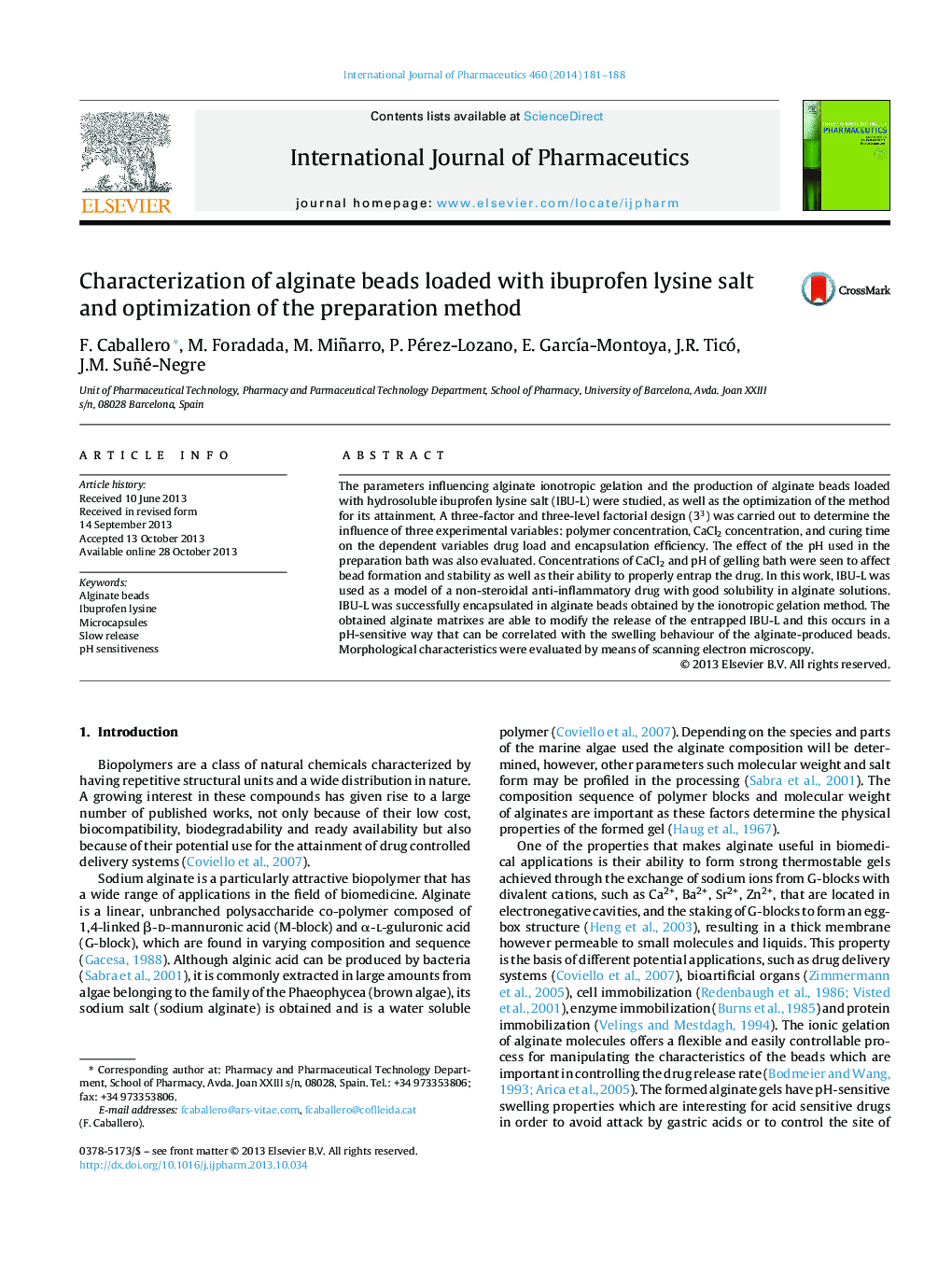| Article ID | Journal | Published Year | Pages | File Type |
|---|---|---|---|---|
| 2501989 | International Journal of Pharmaceutics | 2014 | 8 Pages |
The parameters influencing alginate ionotropic gelation and the production of alginate beads loaded with hydrosoluble ibuprofen lysine salt (IBU-L) were studied, as well as the optimization of the method for its attainment. A three-factor and three-level factorial design (33) was carried out to determine the influence of three experimental variables: polymer concentration, CaCl2 concentration, and curing time on the dependent variables drug load and encapsulation efficiency. The effect of the pH used in the preparation bath was also evaluated. Concentrations of CaCl2 and pH of gelling bath were seen to affect bead formation and stability as well as their ability to properly entrap the drug. In this work, IBU-L was used as a model of a non-steroidal anti-inflammatory drug with good solubility in alginate solutions. IBU-L was successfully encapsulated in alginate beads obtained by the ionotropic gelation method. The obtained alginate matrixes are able to modify the release of the entrapped IBU-L and this occurs in a pH-sensitive way that can be correlated with the swelling behaviour of the alginate-produced beads. Morphological characteristics were evaluated by means of scanning electron microscopy.
Graphical abstractFigure optionsDownload full-size imageDownload high-quality image (149 K)Download as PowerPoint slide
